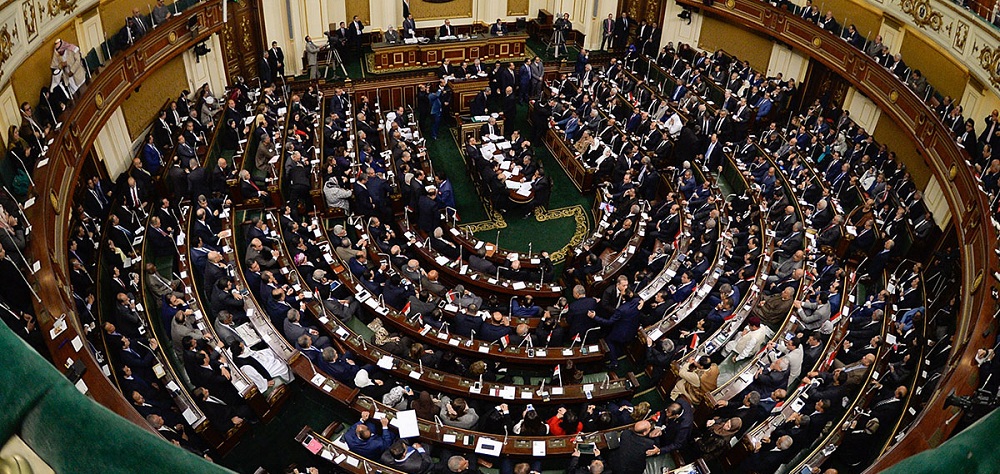Alwaght- On Sunday, Egypt’s parliament approved the president and prime minister’s plan to reshuffle the cabinet that will see reinstating the information ministry.
According to the constitution, parliament can reshuffle the cabinet after consultations with the PM, on the condition that the parliament shows approval.
The reshuffle saw the change of some of the ministers and the merger of ministries.
Rania al-Mashat, formerly the tourism minister, will now head the International Cooperation Ministry as part of the reshuffle. That ministry was formerly the Investment and International Cooperation Ministry and was headed by Sahar Nasr, who served as an international cooperation minister since 2015 and also took on the investment portfolio in 2017.
Khaled al-Anany will succeed Mashat as the tourism minister and also retain his existing role as antiquities minister.
Hala al-Saeed will continue as planning minister but will now also oversee economic development. Her portfolio was previously planning, follow-up and administrative reform.
Nevine Gamea, who headed Egypt’s Micro, Small and Medium Enterprise Development Agency, will be the new Industry Minister, succeeding Amr Nassar.
What’s driving the reshuffle?
What grabs the attention about the recent reshuffle of the Egyptian cabinet is the large number of ministers changed or given new jobs. The changes affected 11 out of 33 ministers.
Yaser Rezq, a figure close to the government and heading the Akhbar Al-Yaum news agency, had earlier said that Egypt needs ministers with social and security experiences so that the citizens enjoy a safe life.
These remarks beside the Egyptian parliament’s Tuesday meeting, in which the lawmakers severely criticized the ministers' performance, indicate that some of the ministers have failed to work efficiently. This was also mentioned by parliament speaker Ali Abdel Aal who said: “Some of the ministers have not done their job well.”
Two changes have been significant in the recent cabinet reshuffle: First, transformation in the economic ministries. Second, reinstating the ministry of information, which was abolished in 2014 by President Abdel Fattah el-Sisi.
El-Sisi’s reforms, which were started in 2016 in association with the International Monetary Fund and positively affected the economic growth rates and job creation, had some side effects: The prices of products and services increased and economic gaps widened in the country.
This was while the president targeted filing the gaps by launching such projects as building cheap houses for the poor and investing to create jobs. So, el-Sisi found it inevitable to reshuffle the key economic ministries while his economic reform plans are on their final steps.
Another important point is that the Egyptian government and on top of it the president argue that they are under harsh media attacks of hostile parties who use the gaps between the people and the government to direct their attacks. These media waves are based on lies and rumors to realize their goals, according to the president. By reinstating the ministry of information, Egypt’s government appears to seek to establish a new media body that will promote the administration’s services or counter the so-called negative media waves majorly led from outside Egypt.
The reshuffle outlook
Since coming to power, the Egyptian government announced that its focus would essentially be on economic and administrative reforms after guaranteeing security in the country. El-Sisi made the regional policy somehow passive from the start and concentrated on the economy.
The government has put all of its eggs in the basket of the economy and so the success or failure of its economic plans, which majorly run on foreign borrowing, will crucially affect the future of the ruling circle. Aloum7 news website, which is close to the government, noted that the reshuffled government will focus on accelerating growth and solving the electricity, transportation, and gas problems.
The government is still worried despite promising economic figures. The IMF statistics show that Egypt’s economic growth rose to 5.5 percent in 2019 from about 2 percent in 2011. The unemployment rate, a report by the IMF suggested, is close to a single-digit rate from 10 percent in the initial years of el-Sisi presidency. It is expected to fall to 8.3 percent in 2020. The inflation rate is frustrating, however. It jumped up to over 20 percent in 2017 from 10 percent in 2011. It is predicted to go even higher next year.
The key point about the economic outlook is that the Egyptian society, hit by deep wealth inequality and majorly divided into lower and higher classes, cannot cope up with high inflation rates.
The government debts, mainly to foreign creditors, leave the government with no choice but price hikes in the services sector. Furthermore, the incomes of the big projects should be spent on repaying the foreign debts of the government in a mid-term period. The government, thus, will find its hands closed to aid the poor.
All these take place while the four-year reform plan in its last year and so the government cannot be expected to work miracles for the economy, especially that Egypt society has lasting problems that make economic reforms with austerity policies impossible to work together.
Therefore, the cabinet changes, aimed at realizing the reform plans, are not expected to be effectual as they face a string of obstacles to meet their objectives.



























